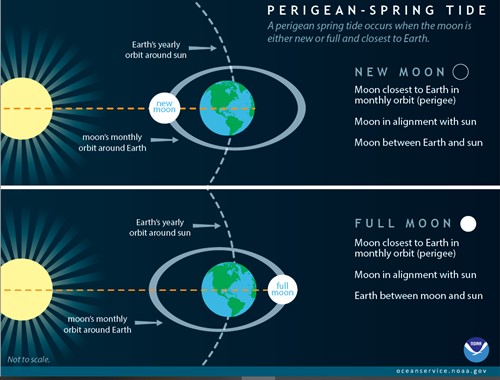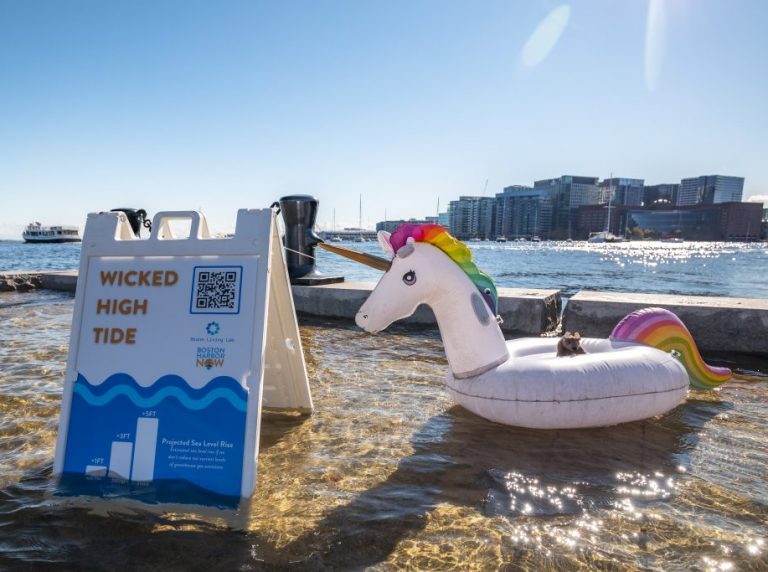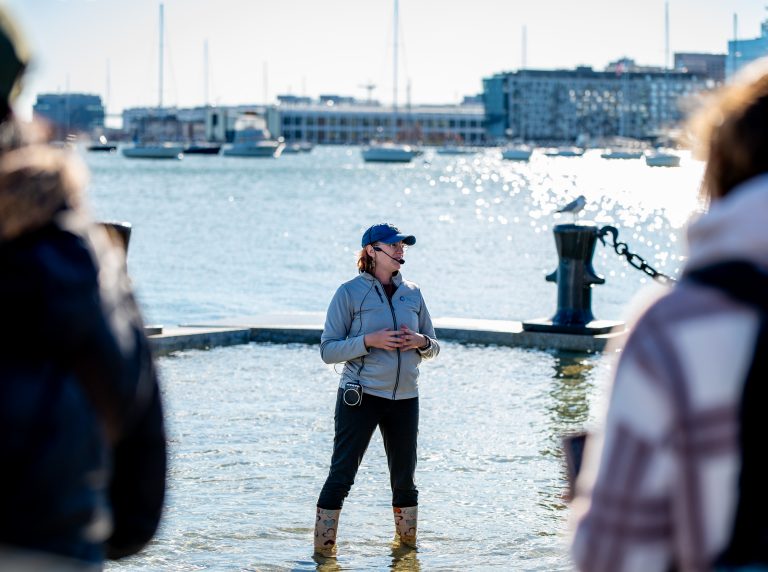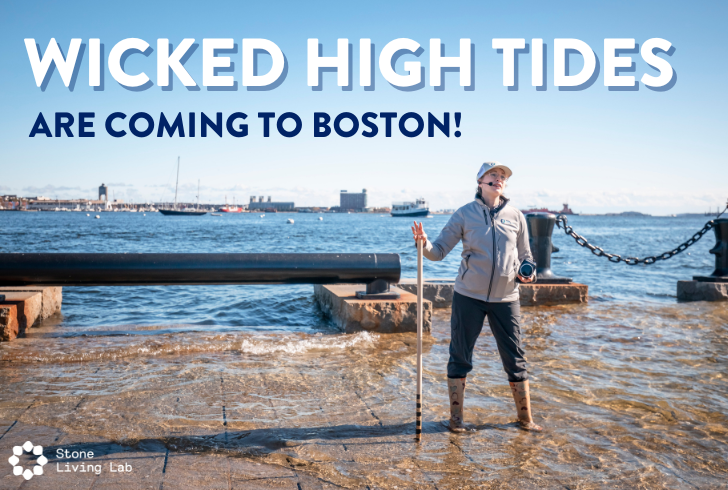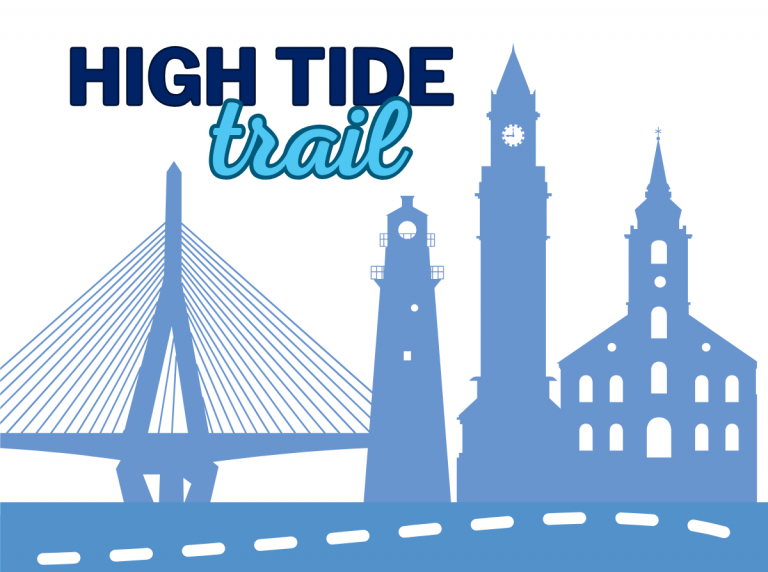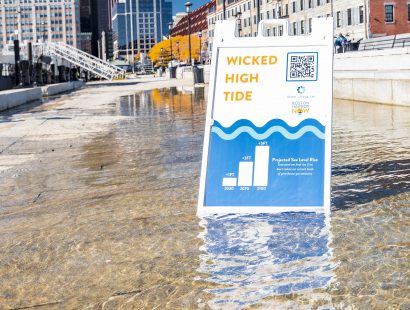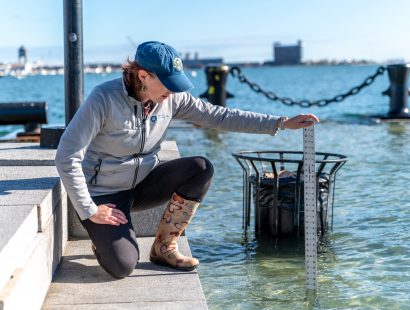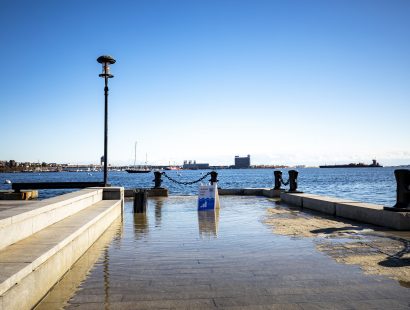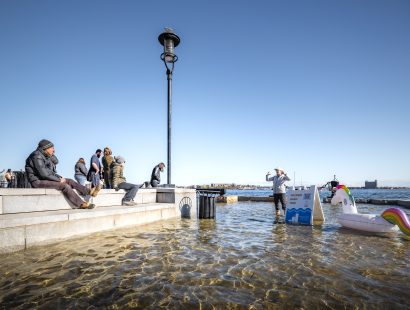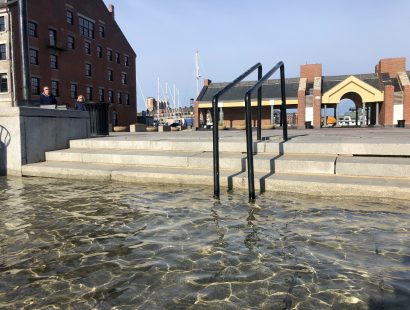Wicked High Tides are Coming to Boston!
This fall, Boston will experience a spectacular tidal event: the Perigean Spring Tides (also called King Tides). These “wicked high tides” result in high tides that are 2-4 feet higher than normal. This natural phenomenon occurs a few times each year, and gives us a window into how sea level rise will soon start affecting our daily lives.
Click here to view this year’s dates in our calendar!
Learn more about Boston’s changing coastline with the High Tide Trail audio tour.
What causes Perigean Spring Tides?
To understand exactly what’s causing these wicked high tides, there are three important things to know:
High and low tides are caused by the pull of gravity from our neighbors, the Sun and Moon – Because it’s a liquid, water is very susceptible to the pull of gravity from the Sun and Moon. This pull causes the oceans to bulge out where the Sun and Moon are closest. As the Earth spins, we actually rotate inside of the bulge, and we experience changing tides! Because the Moon is so much closer to Earth than the Sun, its pull is much stronger – that’s why the tides are strongly linked to the phases of the moon.
The Moon’s orbit around the Earth isn’t a perfect circle – It’s actually oval-shaped, which means some months the moon is closer to the Earth than others. When the Moon is closest to the Earth, it’s in “perigee,” or is “perigean.” That means its pull on our oceans is even stronger than normal. (If you’ve ever heard of a “super moon,” that’s when the moon is both full and perigean, so it appears extra-large in the sky!)
When there’s a new or full moon, the Sun, Moon, and Earth line up, and the “pull” of the sun and moon on our oceans combines to make an extra-high tide – These are called “spring” tides, because the tide springs or jumps higher than usual.
When there is a new moon and the moon is in perigee, we experience wicked high tides!
How does climate change relate to wicked high tides?
Perigean Spring Tides are natural and predictable, and give us a unique opportunity to experience how sea level rise will impact our daily lives in the coming years.
We expect city flooding to happen during storms. Heavy rain can bring water rushing along streets and sidewalks, into basements, parking garages, and even T stations. During Perigean Spring Tides, however, the city experiences ocean flooding even on calm, sunny days. These tides will be so high that many areas along the Harbor will be flooded with sea water. Imagine the impact these wicked high tides will have as the ocean continues to rise. The sea around Boston has already risen about eight inches since 1950, and will likely rise another foot or more in the next thirty years. The “sunny day” flooding we experience during these wicked high tides will only continue to get worse.
What can be done?
We know that in order to slow the progress of climate change, we need to reduce the amount of greenhouse gases being pumped into the atmosphere. Communities, companies, and countries need to commit to more sustainable practices, from increasing public transit to shifting to sustainable energy sources. We also need to prepare for the inevitable changes that are already happening, including sea level rise.
The Stone Living Lab is conducting groundbreaking research on strategies we can use to adapt to climate change and sea level rise. Our aim is to test Nature-based approaches that can make vulnerable coastal regions adaptive to climate change while enhancing natural and built environments.
